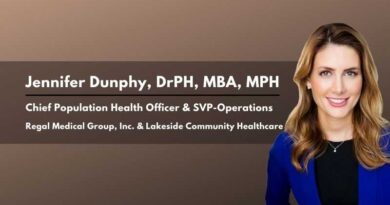The Face of Population Health
By Charleeda Redman, VP Strategy Integration, Children’s Hospital of Philadelphia
A definition proposed by David Kindig and Greg Stoddart in 2003 suggests population health is: “The health outcomes of a group of individuals, including the distribution of such outcomes within the group.” Kindig and Stoddart also believed the field of population health includes health outcomes, patterns of health determinants, and policies and interventions that link these two. To the general public, the idea of population health may not have much meaning, but to an individual whose journey has been affected by such policies and interventions, the concept is significant.
As the youngest child of a single black mother, I often reflect on my childhood recognizing my family’s health disparities. I also recognize resources were available to support us. First and foremost, I had a hardworking mother who made daily sacrifices for her children. Secondly, she had the support of a village of family and friends. Lastly, there were community programs available given our socio-economic status.
Nevertheless, growing up in the predominately white middle to upper-middle-class communities, I was embarrassed by the way we lived and the assistance we received. I was different in so many ways and receiving “assistance” shined a spotlight on these differences.
I now have a healthcare professional’s perspective with more than 20 years of care management experience, and I am thankful for the community resources made available to my mother and grateful that she took advantage of them. Without programs like the Supplemental Nutrition Assistance Program (SNAP), National School Lunch Program, and Head Start, my life journey and health status would have been much different.
I often ask, how was my family identified as “at risk,” and how has that process changed through the years? In the 1980s, identification of program eligibility was person dependent and referrals were mostly by word of mouth. In 2020, despite the Internet of Things (IoT), not much has changed. What and how long will it take for our advances in technology to enable seamless linkages of at-risk individuals to available resources?
We have websites and smart devices that track our behaviors, auto-populate personal information and make recommendations of things we may like. We have access to petabytes of demographic, financial, and clinical data but cannot integrate it with databases to enable seamless referrals to community programs.
Healthcare continues to lag other industries in its ability to meet consumer demands. Yes, I said consumer, not patient. With the Use of a medical approach, many healthcare professionals have been handcuffed by interpreting regulations such as the Health Insurance Portability and Accountability Act (HIPAA), limiting innovation in this space. I have worked countless hours to build clinical processes and integrate technologies to aid in population health only to have one individual’s interpretation of HIPAA halt those efforts.
So, let’s view this problem through a consumer lens. Trust the consumer who makes daily choices on what information they are willing to enter online. Can we leverage this demographic, financial information, and product choices to automate a community program referral?
In reaction to the global pandemic of COVID and recent social unrest, there has been a “call to action.” We now have an environment of engaged communities assisting consumers in need. The healthcare industry must take advantage of the current situation and develop seamless processes to connect people to the community programs they need.
As a former beneficiary, I remain hopeful that this shift in focus and funding will allow our society to close the gap on unmet societal needs. To improve the overall health of a population, we cannot continue to ignore the health inequities that left unmet lead to poor outcomes.



